My First Azure VM
It was easy!
February 26, 2014Recently I began doing some preliminary research on Octopus Deploy for automated deployment of our .net application. With the nature of deployment I thought it might be interesting to set up an environment with a few servers to see how this all works together. Because of this idea I don't feel like doing this myself, maybe I can leverage azure and some of my monthly credits to get up and running quickly.
I read about using gallery images to setup a windows server, how about we try this out and see how easy or hard it ends up being.
Steps involved for me your milage my vary
Log into the portal
First off you need to log into the azure portal.
Click Virtual Machines
I navigated to the virtual machines icon on the left and click on the create virtual machines link as I had no virtual machines setup prior.
Create New VM
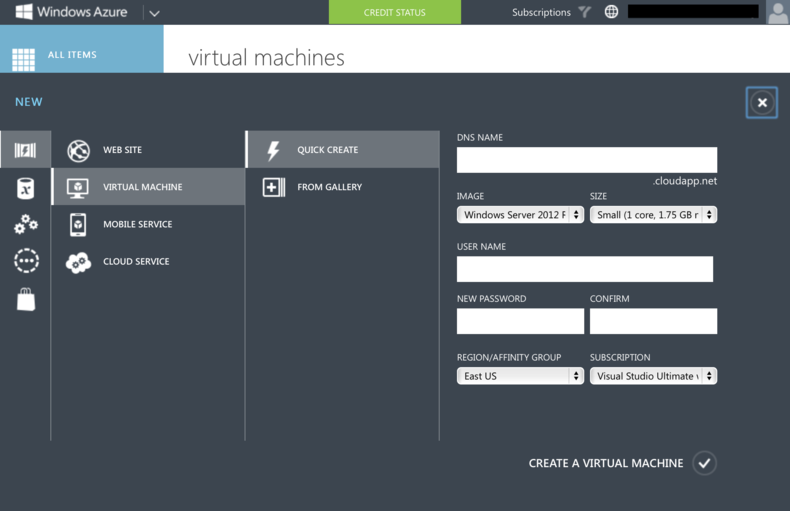
A create new VM form showed up from the bottom. Since I wanted to create something from the gallery I decided to click the link "From Gallery"
Selecting Microsoft Windows Server
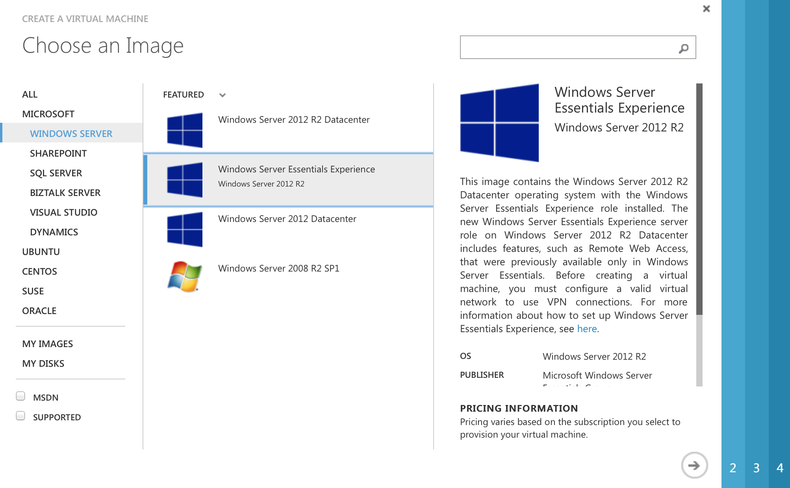
Now since I wanted to create a Windows Server I selected the Windows Server Essentials image.
Server Name and User
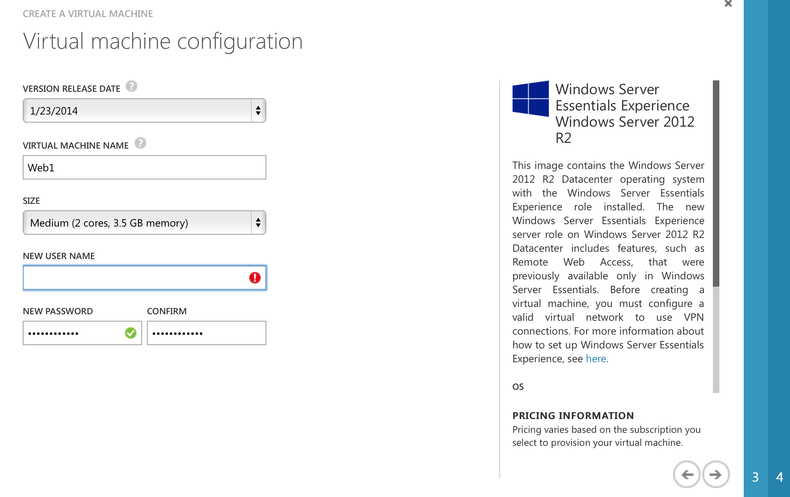
The next screen I saw was some initial configuration for the Vm including server name and the first user in the system.
Cloud Service, region, storage, etc
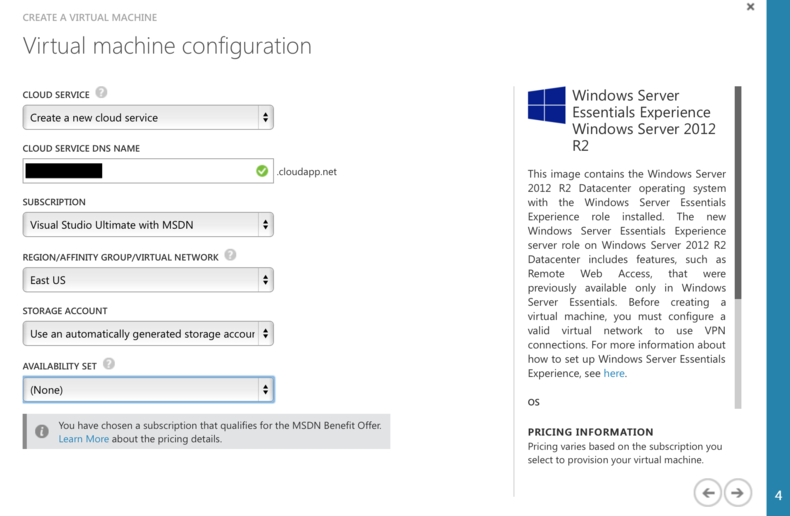
This next screen talks about cloud service, region, storage, and a few other options. I decided to leave these at the default as I need to do a bit more research on what each one means.
Setup Ports

Next you can configure which endpoints are exposed on this server. This allows you to RDP in, power shell, open up HTTP, etc. Once again I left the default configuration and clicked the ✓.
Creating VM

After a few seconds the VM started the provisioning process. Since I didn't have a cloud service setup it created that first and then the actual virtual machine. After a few minutes everything was created and we were running.
It is running!
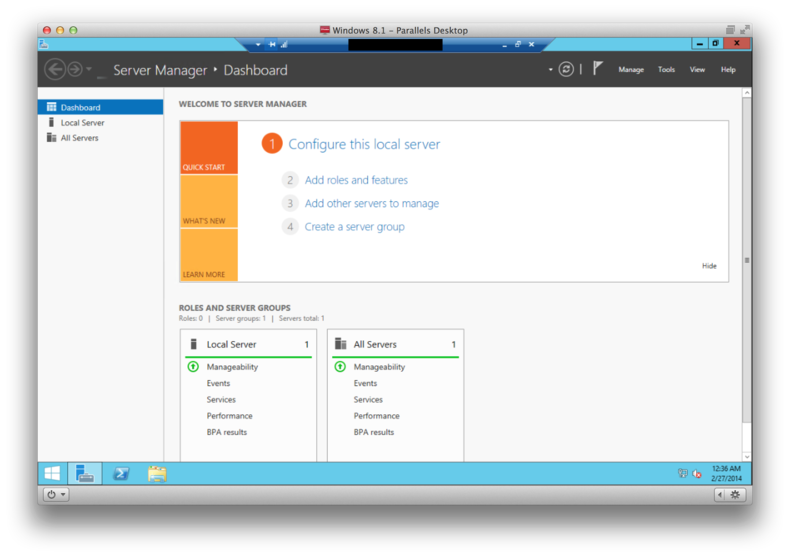
After the Vm was created I clicked on the VM and then the connect icon on the bottom task bar. This downloaded an rdp file that allows you to remotely connect to your azure vm.
I was unable to RDP into the azure vm from my mac as I found from this answer. Once I connected from Windows 8.1 I had no problems.
Conclusion
Well after a few minutes and some basic configuration I had a fresh new VM setup and running waiting for my input. It was easy!
Cover image credit: http://facebook.com/RodrigoMoraesPhotography
